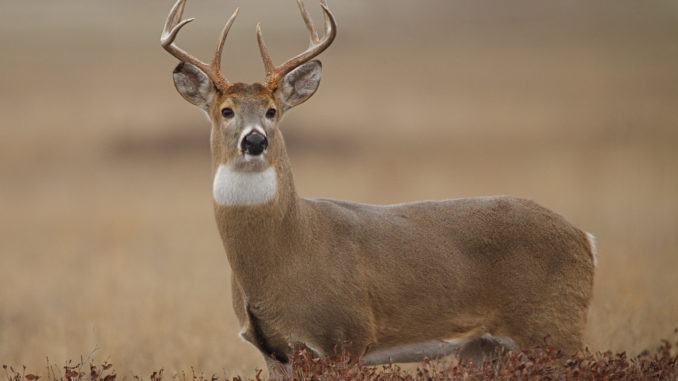
A review of the 2010 Big Buck List and the State Big Game Records provides insight for connecting with a trophy during the 2011 deer season.
What is a trophy buck?
This is pretty much a subject for debate at every hunting camp in the state. It is also a subject written about every year in the many hunting magazines across the country.
Certainly any buck harvested under fair chase is a trophy buck — a hunter’s first buck, a first buck with a bow, a first buck with a muzzleloader, a first buck taken while hunting over a scrape, and so on and so on. Beauty as well as trophy status is in the eye of the beholder.
There are, however, standards established by different entities that determine trophy-buck status.
The Boone & Crockett and Pope & Young clubs are two organizations that have established standards that define trophy status. Louisiana has adopted these standards into their Big Game Records Program, and any buck harvested with a gun that scores 130 on the B&C scale will qualify for recognition on the annual Big Buck Recognition List. Most hunters will mount a 130-class buck.
A typical buck taken with a gun scoring 160 or more qualifies for the State Record List and for B&C recognition. This is certainly a bona-fide trophy buck.
The minimum scores for the bow and muzzleloader typical categories are less than that of the gun hunter, obviously because of weapon type. A 110 B&C score for a bow-killed buck will qualify for the State Record List as will a 120 typical muzzleloader buck. A typical score of 125 qualifies a hunter for the P&Y Record Book, and a 130 typical muzzleloader buck puts one in the Longhunter Society Record Book.
If you are trying to connect with a trophy buck, obviously you don’t pull the trigger on every buck you see. Judging bucks in the field is not an easy task, especially when the buck gives you only a few seconds to make the decision. If your objective is to shoot a mature buck, you must consider body size along with the rack; however, if a trophy is what you’re after, the rack is the focal point of your decision.
A quick way to determine the score of the rack is to estimate the beam length, length of the points, the circumference of the antler at the base and the inside spread. To score well, a buck should have 20-inch main beams, so this would be the first consideration and would give you 40 points right off the bat; if the G1, G2 and G3 points are 5 inches, 10 inches and 10 inches, and are the same on both sides, you have an additional 50 points.
Check the inside spread, if the spread is greater than the ear tips when the ears are pointed outward, you have a 16-inch inside spread, and that puts you at 106.
Finally, look at the antler mass; if the bases appear heavy, at least 4 1/2 inches, then you should have an easy 15 points for the total circumference measurements (four on each side), another 30 points, which now gives you a rough score of 136 for an 8-pointer and, if deductions are few, a 130-class gun buck and at least a 125-class bow buck.
If the beams are short and the G2 and G3 points less than 10 inches, you probably do not need to pull the trigger if you are set on a true trophy.
With a little bit of study, you can become familiar with rack terminology. Look at a few mounted deer and estimate the beam lengths, lengths of the points, inside spread and basal circumference and then get your ruler out and check your estimate. I guess the key is to be able to do this in a matter of seconds in the field — not an easy task when a mature buck is in your grasp and you don’t have all day to decide. If your estimate puts him right on the borderline for what you are looking for, then don’t shoot; deductions will kill you. A true B&C buck will really stand out, and that makes the decision somewhat easy.
Editor’s note: This article is part of the Trophy bucks feature in the October issue of Louisiana Sportsman. Digital editions can be downloaded right to your computer or smartphone.
Be sure to subscribe to ensure you don’t miss a single information-packed issue of Louisiana Sportsman.


